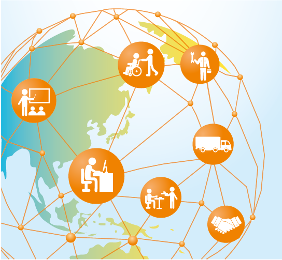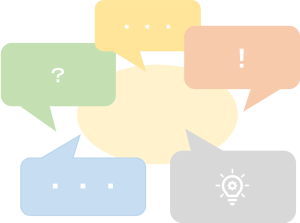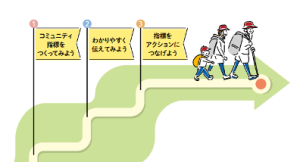By Richard Forrest
Environment Policy Consultant
Washington D.C.
The world of NGOs and social activism is being transformed by the power of short, succinct messages, shared through new online networking and social media systems.
A TWITTER REVOLUTION
A demonstration of the potential for small messages to have big impacts occurred in the Eastern European nation of Moldova in April this year, when students and activists used social networking services, including Twitter and Facebook, to mobilize over 10,000 people to protest against the government and electoral irregularities.
The special role of the micro-blogging website Twitter.com in spreading the protestors’ messages has led the Moldova political revolt to be dubbed the “Twitter Revolution.”
Social media was also mobilized after the disputed presidential election in Iran in June. Amid crackdowns on reporting, including the expulsion of foreign journalists, supporters of reformist candidate and former prime minister Mir-Hossein Mousavi were able to use social media tools to communicate among themselves during weeks of protests and to send their messages to the outside world through updates, photos and videos. The importance of social media to the citizens of Iran was acknowledged by the U.S. State Department when it urged Twitter to postpone maintenance that would have taken the website temporarily off-line, news that was reported by Reuters and CNN and which even made the top headlines in Japan.
Twitter is a form of “micro-blogging”. Micro-blogging is the latest incarnation of blogging, in which people share their thoughts via the internet. However, unlike normal blogging, which requires internet users to visit each blogger’s website, Twitter postings from different users are all seen mixed together in a chronological stream unique to each user, based on the selection of individuals each user is following. What is more, Twitter requires that the small postings to its service be no more than 140 characters long – so short they are appropriately known as “tweets,” like the chirp of the bird that serves as Twitter’s symbol.
SOCIAL MEDIA — SWEEPING IN CHANGE
“Social Media” refers to new, interactive, internet-based methods of sharing messages and information. There has been a veritable explosion of websites and services for social media, which allow individuals from the public to share their thoughts to others who link to them.
There are a wide variety of types of social media, each with a different host company, and different ways of functioning, and many with whimsical names, such as Ning, and Digg. Often, users can share and view one another’s postings through their mobile phones in addition to through computers.
To make use of these new tools, there is now also a proliferation of supporting websites, conferences and consultants.
Most of the information shared through these services is certainly mundane, and the most followed sources, by far, are celebrities — but there are also many new and different ways that people and organizations are using social media to help promote social activist causes and actions.
One way these services can work is by making policy-making processes more transparent and interactive. For instance, in May and June, committees of the U.S. House of Representatives were debating the proposed climate legislation known as the American Clean Energy and Security Act (ACES), and users could follow a steady stream of related information, simply by searching for Twitter messages that had the tag #ACES. NGO staffers were able to send Twitter messages from inside the hearing rooms to update others outside, to notify them of changes in the bill’s language, proposed amendments, and even to report when one Congress member was reading the sports section of the newspaper during the testimony of an expert witness. Those who were not present could feel like they had been there.
Corporations are also using Social Media tools to create new people-to-people networks. Companies are developing two-way online interactions with customers and the public, such as the IBM “A Smarter Planet” website (http://www.ibm.com/ibm/ideasfromibm/us/smartplanet/index.shtml), where visitors to the site are asked to comment and vote on issues they feel are important, including global concerns such as energy, cities, and water. Starbucks has also created its “V2V” community (http://www.v2v.net/starbucks), which allows people to link with others to work on social actions, especially in their local communities.
Governmental agencies have also joined the act, whether to report traffic accidents or track the spread of swine flu. Even United Nations agencies increasingly have Twitter accounts to provide updates on their publications and activities, including the FAO, UNDP, UNEP and UNHCR.
Some of the major NGOs active with social media include environmental conservation organizations like the National Wildlife Federation, and the World Wide Fund for Nature (WWF); other NGOs that have large followings include Oxfam and the Humane Society of the US (although the organizations using these tools, and the numbers of their followers, are growing by the day). Some of these organizations have many staff who are sending out “tweets.” Some NGOs have formally integrated into their staff duties the monitoring and sending out of messages to Twitter and other systems. Some larger organizations have even hired new staff to undertake these tasks, and have been recruiting volunteers to help out in re-sending and spreading the messages they send out.
For many NGOs, companies and government agencies, social media is not only useful for sending out the information that they want to share, but also for them to “listen in” to what is being said about them, to get feedback, and to monitor their image and reputation among the public.
(A good overview of Social Media tools, and how they are being used successfully by a large U.S. environmental NGO, the National Wildlife Federation, can be seen in an online slideshow athttp://www.slideshare.net/danielle.brigida/nwf-staff-intro-to-social-media.)
Clearly, a key focus of this activity is to market the organizations, in ways that are likely to lead to memberships and donations, but the stream of information also helps to engage members in activities (like reporting what wildlife they see in their neighborhoods, or contacting politicians to express their views) in ways that make them feel closer to the organizations, which is likely to eventually led to stronger support for NGOs.
Despite such positive new possibilities, there are also problems. It can be difficult to keep track of all the new possibilities, to make the most of the continually evolving online world, and, as an NGO, to continually feed the system with interesting information, or, as a recipient, to sift through the resulting flood of information that arrives. And because information can be communicated more immediately through these networks, social media tools are helping make obsolete, to a certain degree, organizational newsletters and other forms of communication.
IMPACTS ON NGOs
How will all this change the work of NGOs? There seems to be a chance that Social Media systems are in the process of profoundly changing the ways that NGOs conduct their activities. NGOs clearly should explore these types of tools to help get their messages out to the public and the media, and to engage the public in actions to support their missions.
And in the near future, it may mean that those organizations that are able to provide the fastest and best stream of packaged, bite-sized pieces of information and insights will be the organizations that get the most attention from the media, the public, and even the government. Organizational survival and success may even rest on these tiny messages of just 140 characters.












